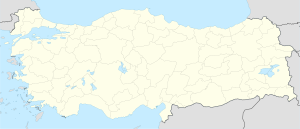 Istanbul (/ˌɪstænˈbʊl/;Turkish: İstanbul [isˈtanbuɫ] ( listen)) is the most populous city in Turkey, and the country's economic, cultural, and historical center. Istanbul is a transcontinental city in Eurasia, straddling the Bosphorus strait between the Sea of Marmara and the Black Sea. Its commercial and historical center lies on the European side and about a third of its population lives on the Asian side.[10] The city is the administrative center of the Istanbul Metropolitan Municipality (coterminous with Istanbul Province), both hosting a population of around 14 million residents.[4] Istanbul is one of the world's most populous cities and ranks as world's 5th-largest city proper and the largest European city.
Istanbul (/ˌɪstænˈbʊl/;Turkish: İstanbul [isˈtanbuɫ] ( listen)) is the most populous city in Turkey, and the country's economic, cultural, and historical center. Istanbul is a transcontinental city in Eurasia, straddling the Bosphorus strait between the Sea of Marmara and the Black Sea. Its commercial and historical center lies on the European side and about a third of its population lives on the Asian side.[10] The city is the administrative center of the Istanbul Metropolitan Municipality (coterminous with Istanbul Province), both hosting a population of around 14 million residents.[4] Istanbul is one of the world's most populous cities and ranks as world's 5th-largest city proper and the largest European city.Founded on the Sarayburnu promontory around 660 BCE as Byzantium, the city now known as Istanbul developed to become one of the most significant cities in history. For nearly sixteen centuries following its reestablishment as Constantinople (Greek: Κωνσταντινούπολις Konstantinoúpolis; Latin: Constantinopolis) or New Rome (Greek: Νέα Ῥώμη, Nea Romē; Latin: Nova Roma) in 330 CE, it served as an imperial capital for the Roman and Byzantine (330–1204 and 1261–1453), the Latin (1204–1261), and the Ottoman (1453–1922) empires.[11] It was instrumental in the advancement of Christianity during Roman and Byzantine times, before the Ottomans conquered the city in 1453 and transformed it into an Islamic stronghold and the seat of the Ottoman Caliphate





